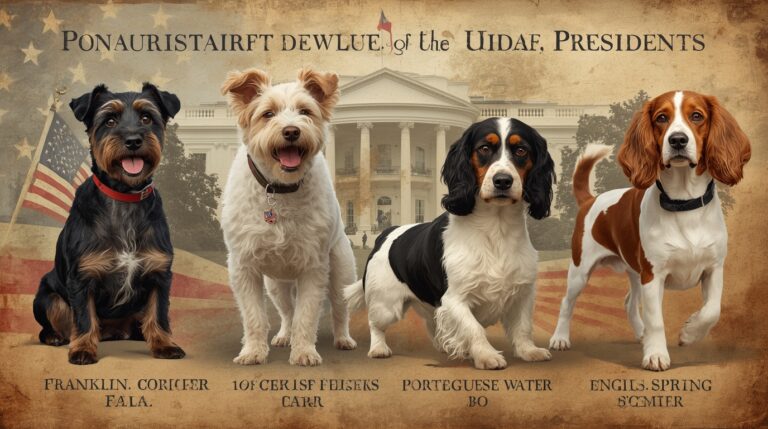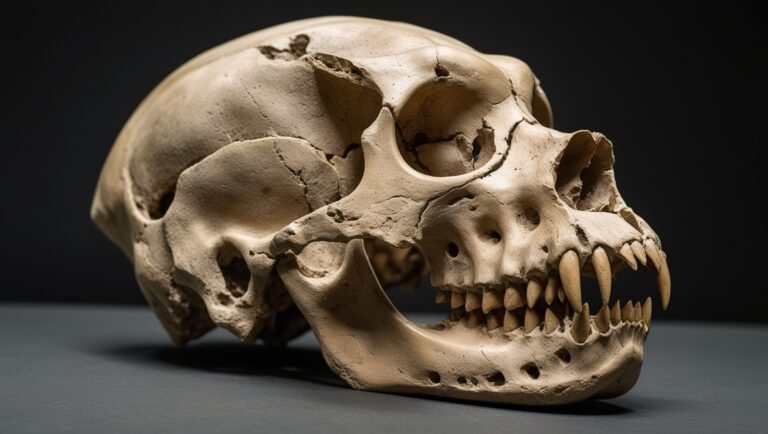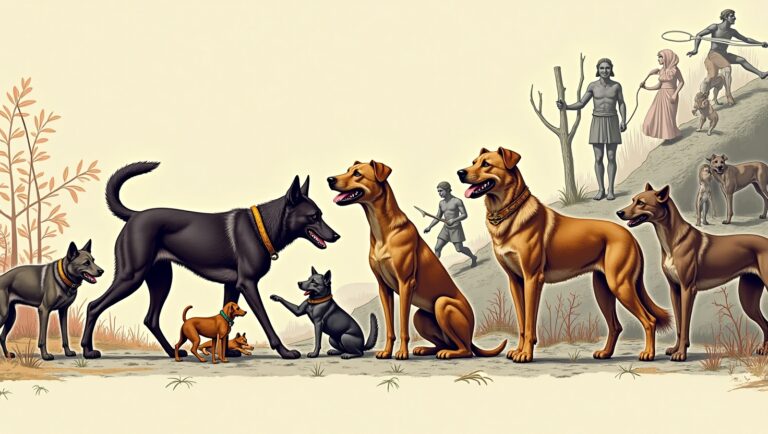Ancient Breeds Still Alive Today

Why Ancient Breeds Matter
Ancient breeds offer insights into early domestication, cultural traditions, and human evolution. By understanding these living fossils, we gain a better understanding of the relationship between humans and animals, the origin of selective breeding, and environmental adaptation strategies developed across millennia.
The Concept of “Ancient Breeds”
Defining Ancient in Animal Domestication
An ancient breed refers to an animal lineage that has remained genetically and physically consistent for hundreds or even thousands of years. These animals were often domesticated for specific purposes — hunting, guarding, herding, or companionship — and their traits have been conserved through both natural selection and intentional breeding.
Evolutionary Survival vs. Genetic Purity
Some breeds survived due to genetic diversity and adaptability, while others were preserved through cultural reverence and ritualistic breeding, such as the Saluki in the Middle East.
Oldest Known Dog Breeds Still Around
Basenji: The Barkless Hunter
Basenjis, originating from Central Africa, date back more than 5,000 years. Found on ancient Egyptian tombs, this breed is known for its lack of barking, high intelligence, and independence. Basenjis clean themselves like cats and were once used to flush game into nets.
Also read this The History of Dog Breeds
Saluki: The Royal Dog of Egypt
Salukis, with evidence tracing back to 7000 BC, were revered by Egyptian royalty. These slender, swift dogs were considered gifts from Allah and buried with Pharaohs. Their long legs, feathered ears, and endurance make them efficient hunters even today.
Akita Inu: The Guardian of Japan
A national treasure in Japan, the Akita Inu has been bred since at least 1000 years ago. Originally guard dogs for royalty and used in bear hunting, Akitas are loyal, brave, and silent protectors.
Afghan Hound: Silk-Coated Sighthound
The Afghan Hound descends from Middle Eastern mountain dogs and was used by nomads for hunting large prey. Its distinct long coat and aloof demeanor make it one of the most elegant ancient breeds still seen in modern dog shows.
Tibetan Mastiff: Himalayan Protector
Built to withstand the frigid Tibetan Plateau, the Tibetan Mastiff was used to guard monasteries. Its massive size, deep bark, and fearless nature made it a legend among protectors.
Ancient Cat Breeds that Defy Time
Egyptian Mau: The Spotted Cat of Pharaohs
Egyptian Maus are the only naturally spotted domestic cats. They trace back to ancient Egyptian art and hieroglyphs, where they were seen as spiritual beings and protectors of food stores.
Persian Cat: The Luxurious Legacy
Persian cats date back to Mesopotamian times, with records from 1620s Italy documenting their journey from Persia to Europe. Known for their flat faces and long, luxurious coats, they remain one of the most popular breeds today.
Siamese Cat: Sacred Companions of Thai Temples
Hailing from ancient Siam (now Thailand), Siamese cats were sacred temple animals. They’re known for their blue almond eyes, vocal nature, and strong bonds with humans.
Turkish Van: Swimmers of Lake Van
Known for their fondness for water, the Turkish Van is considered an ancient breed native to Eastern Turkey. Genetic evidence supports their isolated lineage dating back thousands of years.
Norwegian Forest Cat: Viking Era Survivor
The Norwegian Forest Cat may have been the Vikings’ ship cat, valued for rodent control and companionship. Its thick coat and powerful build suit Scandinavia’s harsh winters.
Livestock with Ancient Lineage
Yak: The High-Altitude Beast
Domesticated over 5,000 years ago on the Tibetan Plateau, yaks provided meat, milk, fiber, and transport. Their thick fur and high lung capacity allow survival at extreme altitudes.
Zebu: Humped Cattle of Ancient India
Zebus, or Bos indicus, originated in South Asia and were critical to ancient agriculture. With their hump, floppy ears, and resistance to heat, they remain dominant in tropical countries.
Icelandic Sheep: Norse Import
Brought by Viking settlers in the 9th century, Icelandic sheep have adapted to Iceland’s rugged terrain. They are valued for dual-coated wool and hardy constitution.
Guinea Fowl: The African Watchbird
Domesticated in West Africa, guinea fowls have remained relatively unchanged. Known for their loud alarm calls and insect-eating habits, they serve both ornamental and agricultural roles.
Silkie Chicken: Silk-Feathered Chinese Heritage
Silkies are believed to have originated in ancient China, praised for their black skin, blue earlobes, and fur-like feathers. They were described by Marco Polo during his travels.
Horses with Royal and Ancient Bloodlines
Arabian Horse: Oldest Domesticated Breed
The Arabian horse, with records from 3,000 BC, is the foundation of many modern breeds. Known for endurance, speed, and loyalty, they were prized by Bedouins and used in war.
Caspian Horse: Ancient Persian Marvel
Once thought extinct, Caspian horses were rediscovered in 1965 in Iran. Used by Persian nobility, they’re among the smallest but strongest horse breeds.
Primitive and Exotic Species Still with Us
Axolotl: The Mexican Water Dragon
Axolotls, amphibians native to Lake Xochimilco, never undergo full metamorphosis, retaining gills into adulthood. Revered by Aztecs, they’re now endangered due to pollution.
Coelacanth: The Living Fossil Fish
Once thought extinct for 65 million years, the Coelacanth was rediscovered in 1938. This deep-sea fish predates dinosaurs and represents a snapshot of prehistoric marine life.
Tuatara: The Reptilian Ancestor
Native to New Zealand, tuataras are the only surviving members of an order dating back 200 million years. With a “third eye” and slow metabolism, they are living fossils.
Why These Breeds Survived
Adaptation to Environment
Breeds like the Tibetan Mastiff and Yak show how geographic isolation and environmental demands led to survival advantages.
Cultural and Religious Significance
Breeds with spiritual or practical importance — like Salukis in Islam or Zebus in Hinduism — were preserved with care.
Selective Preservation by Humans
Humans played a pivotal role, preserving desired traits and maintaining bloodlines across generations.
Preservation of Ancient Breeds
Efforts include DNA mapping, global breed registries, and zoos with conservation missions. Organizations like the Livestock Conservancy track endangered ancient breeds.
Cultural Symbolism of Ancient Breeds
Sacred Dogs in Egyptian Rituals
Salukis and Basenjis were mummified and buried with nobles.
Cats in Norse and Islamic Traditions
Cats were considered spiritual protectors, often tied to mythology and folklore.
Cattle in Hinduism and African Spirituality
Zebus are revered in Hindu ceremonies, while in Africa they represent wealth and ancestors.
Global Distribution of Surviving Ancient Breeds
Asia: Cradle of Ancient Genetics
Akita, Yak, Zebu, Arabian horse — many originate from Asia’s ancient civilizations.
Africa: Home of Wild and Ancient
Basenji, Egyptian Mau, Guinea Fowl illustrate Africa’s deep domestication history.
Europe: Medieval Preservation
Norwegian Forest Cat, Icelandic sheep — Europe kept ancient traits alive via isolation.
South America: Underdocumented Heritage
While less discussed, llamas and alpacas represent ancient Andean domestication.
Genetic Markers and Ancient DNA
Modern tools help scientists compare DNA between breeds and fossils, proving lineage integrity for breeds like the Saluki and Caspian Horse.
Breeds Lost in Time vs. Surviving Lineages
Many ancient breeds — like Molossus dogs or Aurochs — are extinct, but their genetics live on in modern breeds and hybrids.
Misconceptions about “Ancient” Animals
Not all ancient-looking animals are old breeds. Some, like the Lykoi cat, appear ancient but were bred recently.
Breeding Ethics and Genetic Bottlenecks
Ancient breeds are vulnerable to inbreeding, causing health issues. Ethical breeding must balance preservation and vitality.
Roles of Ancient Breeds in Modern Society
They serve as guardians (Akita), herders (Zebu), pets (Siamese), and show animals (Silkie).
The Revival of Ancient DNA
Projects aim to recreate extinct breeds via cloning or back-breeding (e.g., Aurochs revival in Europe).
Indigenous Wisdom and Ancient Breeds
Traditional knowledge, such as Australian Aboriginal dog training, remains vital to maintaining pure ancient breeds.
Ancient Breeds in Media and Pop Culture
From Egyptian Mau in art to Basenji in literature, these breeds appear throughout culture and modern media.
Conclusion: A Living Link to Our Past
Ancient breeds aren’t just pets or livestock; they are biological storytellers of civilizations, traditions, and survival. Preserving them is not nostalgia — it’s about protecting biodiversity and history.





